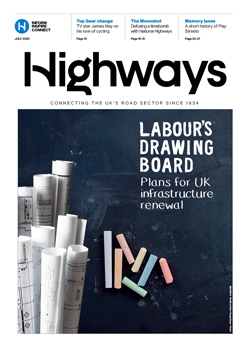The US Department of Transportation has released new Federal guidance for automated vehicles, saying this advances its commitment to supporting the safe integration of automation into the broad multimodal surface transportation system.
“The safe integration of automated vehicle technology into our transportation system will increase productivity, facilitate freight movement and create new types of jobs,” said Secretary Elaine L Chao.
The USDOT says AV 3.0 incorporates the results of extensive stakeholder engagement to provide updated voluntary guidance and policy considerations for a range of industry sectors, including: manufacturers and technology developers, infrastructure owners and operators, commercial motor carriers, bus transit, and State and local governments. It adds that the document “Preparing for the Future of Transportation: Automated Vehicles 3.0” (AV 3.0) builds upon—but does not replace—voluntary guidance provided in “Automated Driving Systems 2.0: A Vision for Safety.”
AV 3.0 supports the safe development of automated vehicle technologies by:
- Providing new multi-modal safety guidance
- Reducing policy uncertainty and clarifying roles
- Outlining a process for working with USDOT as technology evolves
Specifically, the new AV 3.0 guidance provides several updates to the Department’s initiatives relating to automated vehicles, by:
- Stating that the Department will interpret and, consistent with all applicable notice and comment requirements, adapt the definitions of “driver” or “operator” as appropriate to recognise that such terms do not refer exclusively to a human, but may include an automated system.
- Identifying and supporting the development of automation-related voluntary standards developed through organisations and associations, which can be an effective non-regulatory means to advance the integration of automation technologies.
- Affirming that the Department is continuing its work to preserve the ability for transportation safety applications to function in the 5.9 GHz spectrum.
AV 3.0 also announces and discusses several forthcoming rule makings and other actions being taken in the near future by the Department’s operating administrations, including:
- The National Highway Traffic Safety Administration (NHTSA) will request public comment on a proposal to streamline and modernise the procedures it will follow when processing and deciding exemption petitions.
- The Federal Motor Carrier Safety Administration (FMCSA) will initiate an Advance Notice of Proposed Rule making to address automated vehicles, particularly to identify regulatory gaps, including in the areas of inspection, repair, and maintenance for ADS.
- The Federal Highway Administration (FHWA) announces plans to update the 2009 Manual on Uniform Traffic Control Devices (MUTCD), taking into consideration new connected and automated vehicle technologies.
- The Federal Railroad Administration (FRA) is initiating research to develop and demonstrate a concept of operations, including system requirements, for the use of automated and connected vehicles to improve safety of highway-rail crossings.
- The Maritime Administration (MARAD) and FMCSA are evaluating the regulatory and economic feasibility of using automated truck queueing as a technology solution to truck staging, access, and parking issues at ports.
- The Pipelines and Hazardous Materials Administration (PHMSA) is researching the ability to enable the digital transmission of information to first responders before they arrive at an incident that involves hazardous materials.
- The Federal Transit Administration (FTA) has published a five-year research plan on automating bus transit.
The draft Guidance will be published in the Federal Register for public review and comment. More information on the Department’s work on automated vehicle systems can be found at www.transportation.gov/av?utm_source=rss&utm_medium=rss.
ITS America President and CEO Shailen Bhatt gave a positive reaction to the guidance saying in a statement:
The Intelligent Transportation Society of America (ITS America) is encouraged by the US Department of Transportation’s support for V2X in “Preparing for the Future of Transportation: Automated Vehicles 3.0,” the guidance for automated driving systems.
Vehicle-to-everything communications, known as V2X, allows vehicles to communicate with other vehicles, road users, and the infrastructure. Regardless of technology, preserving the safety spectrum (5.9 GHz band) to enable V2X communications is and should remain the top priority to support our shared goal of saving lives on U.S. roadways.
In addition, the Department’s plan to update safety standards and streamline and modernise the exemption approval process for automated vehicles is a positive step forward.
We also applaud the Department’s emphasis on not just ‘curb-to-curb’ but ‘door-to-door’ travel, which will allow people with disabilities and older adults more independence by providing better access to jobs, education and healthcare.





